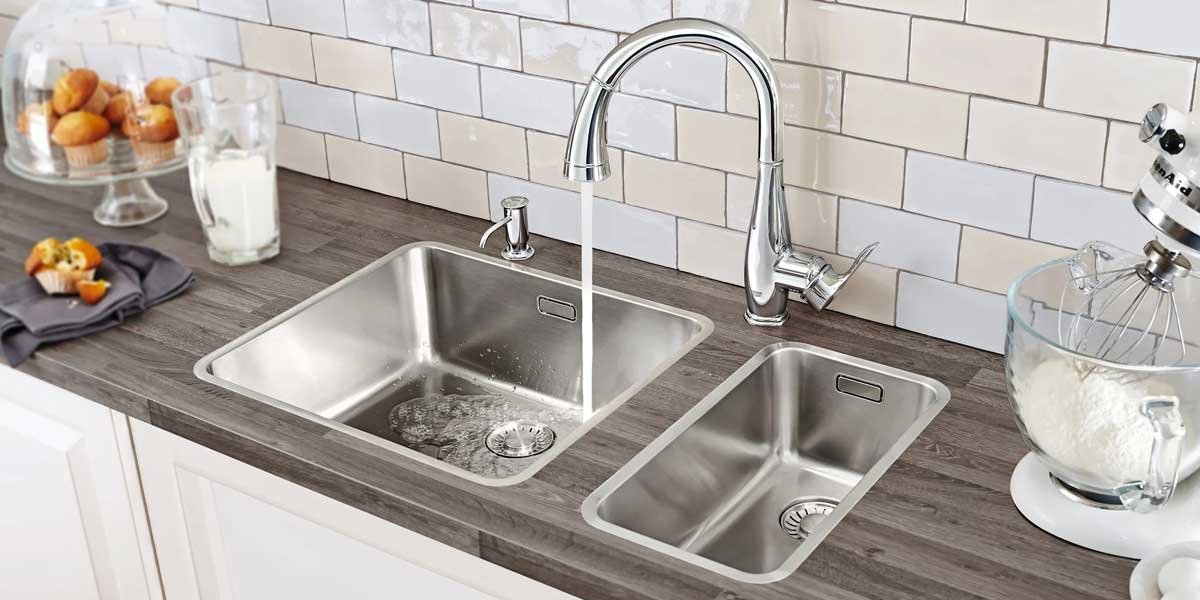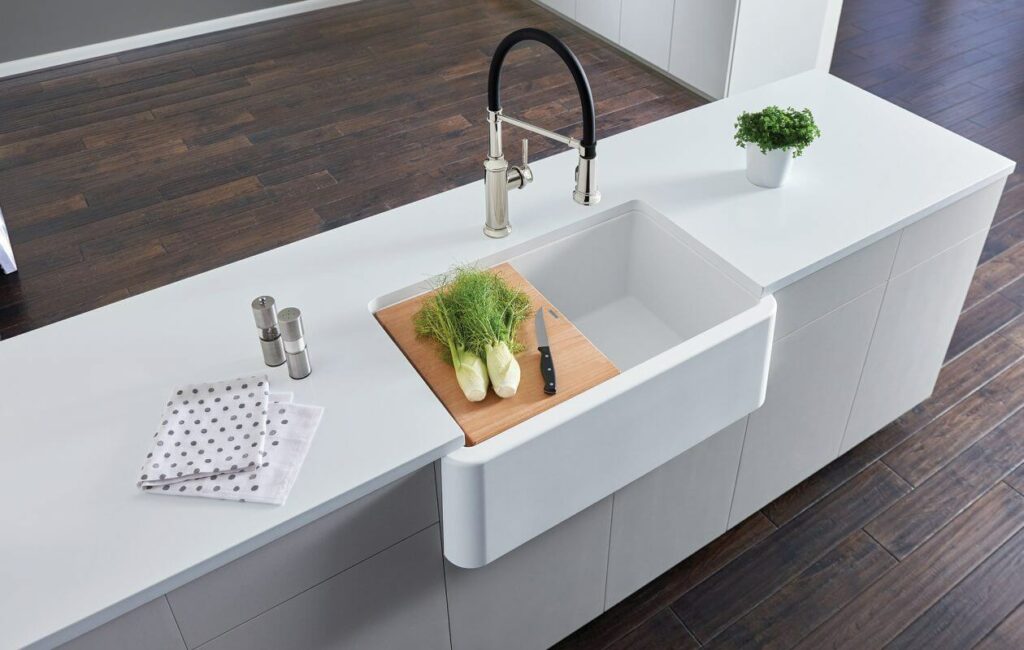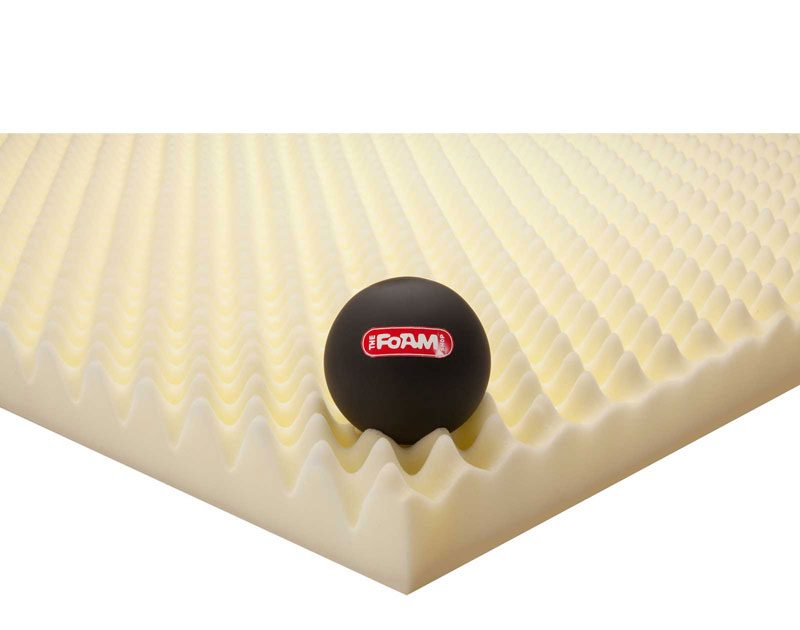The average volume of a kitchen sink is an important factor to consider when designing or renovating a kitchen. Not only does it determine how much space you'll have for washing dishes and preparing food, but it also impacts the overall functionality and efficiency of your kitchen. On average, a kitchen sink has a volume of around 15-20 gallons, but this can vary depending on the size and shape of the sink. This volume is typically enough to hold a large load of dishes or a large pot for cooking. However, it's important to note that the volume of your sink may also be affected by the depth and style of the basin.1. Average Volume of a Kitchen Sink
Estimating the volume of a kitchen sink can be a bit tricky, especially if you're not familiar with the different measurements and calculations involved. However, there are some simple methods you can use to get a good estimate of the volume of your sink. One way to estimate the volume is by measuring the dimensions of your sink and using a formula to calculate the volume based on those measurements. Another option is to fill your sink with water and then pour the water into a measuring container to determine the volume.2. Estimating the Volume of a Kitchen Sink
If you want to calculate the volume of your kitchen sink, you'll need to know the length, width, and depth of the basin. These measurements can be taken with a measuring tape or ruler. Once you have these measurements, you can use the following formula to calculate the volume: Volume = length x width x depth For example, if your sink is 30 inches long, 20 inches wide, and 10 inches deep, the volume would be 6,000 cubic inches.3. Calculating the Volume of a Kitchen Sink
If you want a more accurate measurement of the volume of your kitchen sink, you can measure it by filling it with water. This method is also helpful if your sink has an irregular shape or if you're not comfortable with the calculations involved in the previous method. To measure the volume of your sink using this method, you'll need a large measuring container, such as a bucket or pitcher, and a measuring cup. Simply fill the sink with water and then carefully pour the water into the measuring container. Keep track of how many times you have to fill the container and multiply that number by the volume of the container (in gallons) to get the total volume of your sink.4. How to Measure the Volume of a Kitchen Sink
Once you have the measurements or calculations for your kitchen sink's volume, you may be wondering what to do with that information. Determining the volume of your sink can be helpful in a few different ways. First, it can help you choose the right size sink for your needs. If you know you have a large family or tend to have a lot of dishes to wash, you may want to opt for a sink with a larger volume capacity. Second, it can also be useful for planning out your kitchen layout and making sure your sink fits comfortably in the available space.5. Determining the Volume of a Kitchen Sink
As mentioned earlier, there are a few different methods you can use to estimate the volume of your kitchen sink. The best method for you will depend on your personal preferences and the tools you have available. For those who are comfortable with calculations and have the necessary measurements, using a formula can be a quick and accurate way to estimate the volume. On the other hand, if you prefer a more hands-on approach, filling your sink with water and measuring the volume that way may be a better option.6. Best Methods for Estimating Kitchen Sink Volume
Kitchen sinks come in a variety of sizes, from small single-basin sinks to large double-basin sinks. The volume capacity of these sinks can vary greatly depending on their size and shape. For example, a small single-basin sink may have a volume capacity of 10-15 gallons, while a large double-basin sink may have a volume capacity of 25-30 gallons. It's important to consider the volume capacity when choosing a sink to ensure it will meet your needs.7. Volume Capacity of Common Kitchen Sink Sizes
If you have a standard kitchen sink with a single basin, measuring the volume can be fairly straightforward. Using the methods mentioned above, you can quickly determine the volume of your sink. However, if you have a double-basin sink, it's important to measure each basin separately, as they may have different volumes due to their shape or depth.8. Measuring the Volume of a Standard Kitchen Sink
When estimating the volume of your kitchen sink, there are a few tips to keep in mind to ensure you get an accurate measurement. First, make sure you're using the correct units of measurement. For example, if your sink measurements are in inches, your volume calculation will be in cubic inches. Second, be sure to take into account the shape and depth of your sink, as this can affect the volume capacity. Using a formula or measuring with water can help ensure you get an accurate measurement.9. Tips for Accurately Estimating Kitchen Sink Volume
Lastly, it's important to understand how the volume of your kitchen sink may be affected by its shape. A rectangular sink may have a larger volume capacity than a round sink with the same dimensions, as the corners of a rectangular sink can hold more water. Additionally, the depth of the basin can also impact the volume capacity. A deeper sink will have a larger volume than a shallower sink with the same length and width.10. Understanding the Volume of Different Kitchen Sink Shapes
Calculating the Volume of a Kitchen Sink

The Importance of Accurately Estimating the Volume of a Kitchen Sink
 When it comes to designing a kitchen, every detail matters. From the layout and appliances to the colors and materials, every decision plays a role in creating a functional and aesthetically pleasing space. One often overlooked aspect of kitchen design is the volume of the kitchen sink. While it may seem like a minor detail, accurately estimating the volume of a kitchen sink is crucial for several reasons.
Firstly, knowing the volume of a kitchen sink is essential for proper installation. If the sink is too large or too small for the designated space, it can throw off the entire design and functionality of the kitchen. Additionally, an incorrectly sized sink can cause issues with plumbing and drainage, leading to costly repairs down the line.
Furthermore, the volume of a kitchen sink can affect the overall flow and efficiency of the kitchen. A sink that is too small may not be able to handle the amount of dishes and food prep required, causing congestion and delays in meal preparation. On the other hand, a sink that is too large may take up too much counter space and make it difficult to navigate around the kitchen.
When it comes to designing a kitchen, every detail matters. From the layout and appliances to the colors and materials, every decision plays a role in creating a functional and aesthetically pleasing space. One often overlooked aspect of kitchen design is the volume of the kitchen sink. While it may seem like a minor detail, accurately estimating the volume of a kitchen sink is crucial for several reasons.
Firstly, knowing the volume of a kitchen sink is essential for proper installation. If the sink is too large or too small for the designated space, it can throw off the entire design and functionality of the kitchen. Additionally, an incorrectly sized sink can cause issues with plumbing and drainage, leading to costly repairs down the line.
Furthermore, the volume of a kitchen sink can affect the overall flow and efficiency of the kitchen. A sink that is too small may not be able to handle the amount of dishes and food prep required, causing congestion and delays in meal preparation. On the other hand, a sink that is too large may take up too much counter space and make it difficult to navigate around the kitchen.
Factors to Consider when Estimating the Volume of a Kitchen Sink
 When it comes to calculating the volume of a kitchen sink, there are a few key factors to consider. The first is the shape of the sink. Kitchen sinks come in various shapes, including rectangular, round, and square. Each shape will have a different volume, so it's essential to measure the sink accurately.
The next factor to consider is the depth of the sink. Most standard kitchen sinks have a depth of around 8 inches, but some may be deeper or shallower. The depth will directly impact the volume of the sink, so it's crucial to measure this accurately.
Lastly, the material of the sink can also affect its volume. Stainless steel, for example, is thinner and lighter than porcelain, so a stainless steel sink may have a larger volume compared to a porcelain sink of the same shape and depth.
With these factors in mind, the best estimate for the volume of a kitchen sink can be calculated by using the following formula:
Volume = length x width x depth
When it comes to calculating the volume of a kitchen sink, there are a few key factors to consider. The first is the shape of the sink. Kitchen sinks come in various shapes, including rectangular, round, and square. Each shape will have a different volume, so it's essential to measure the sink accurately.
The next factor to consider is the depth of the sink. Most standard kitchen sinks have a depth of around 8 inches, but some may be deeper or shallower. The depth will directly impact the volume of the sink, so it's crucial to measure this accurately.
Lastly, the material of the sink can also affect its volume. Stainless steel, for example, is thinner and lighter than porcelain, so a stainless steel sink may have a larger volume compared to a porcelain sink of the same shape and depth.
With these factors in mind, the best estimate for the volume of a kitchen sink can be calculated by using the following formula:
Volume = length x width x depth
Conclusion
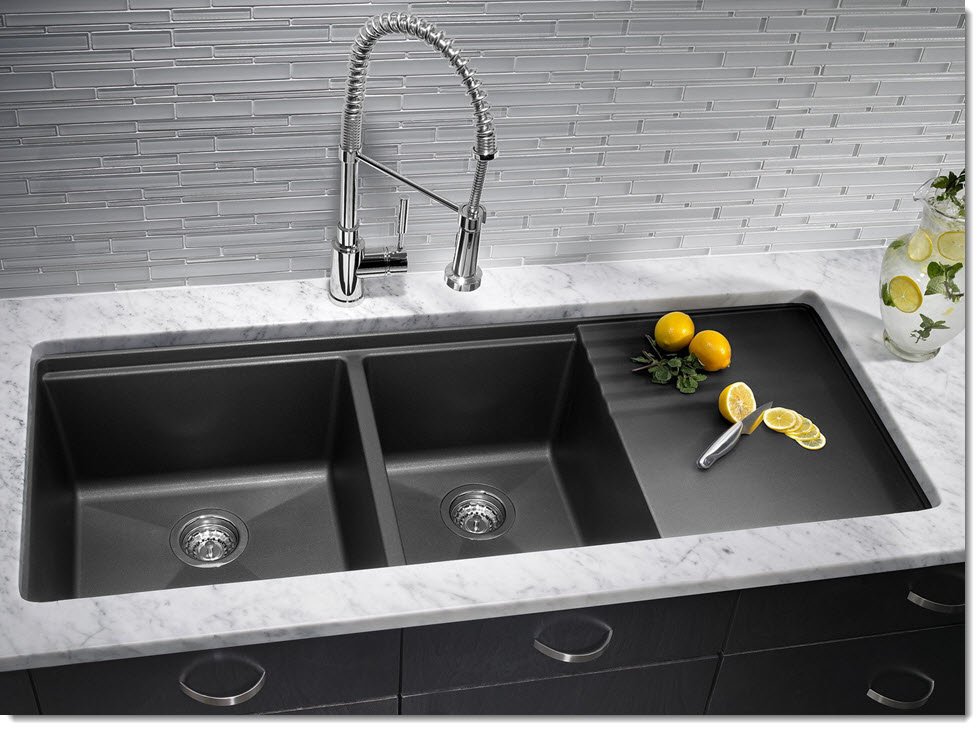 In conclusion, accurately estimating the volume of a kitchen sink is vital for proper installation and functionality in a kitchen design. By considering the shape, depth, and material of the sink, a precise estimate can be calculated using a simple formula. Don't underestimate the importance of this detail when designing your dream kitchen.
In conclusion, accurately estimating the volume of a kitchen sink is vital for proper installation and functionality in a kitchen design. By considering the shape, depth, and material of the sink, a precise estimate can be calculated using a simple formula. Don't underestimate the importance of this detail when designing your dream kitchen.




























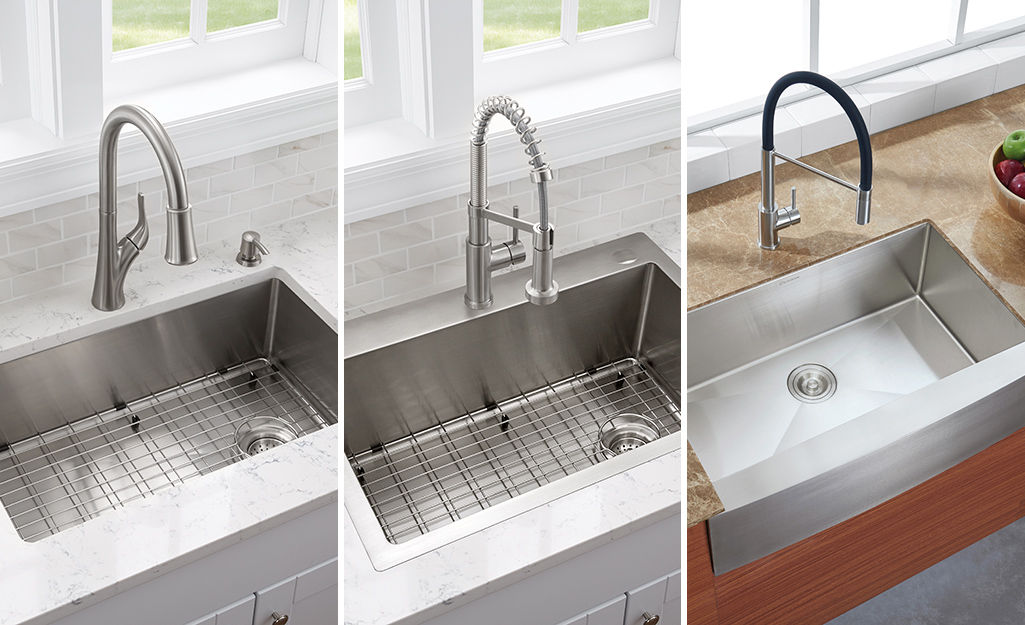

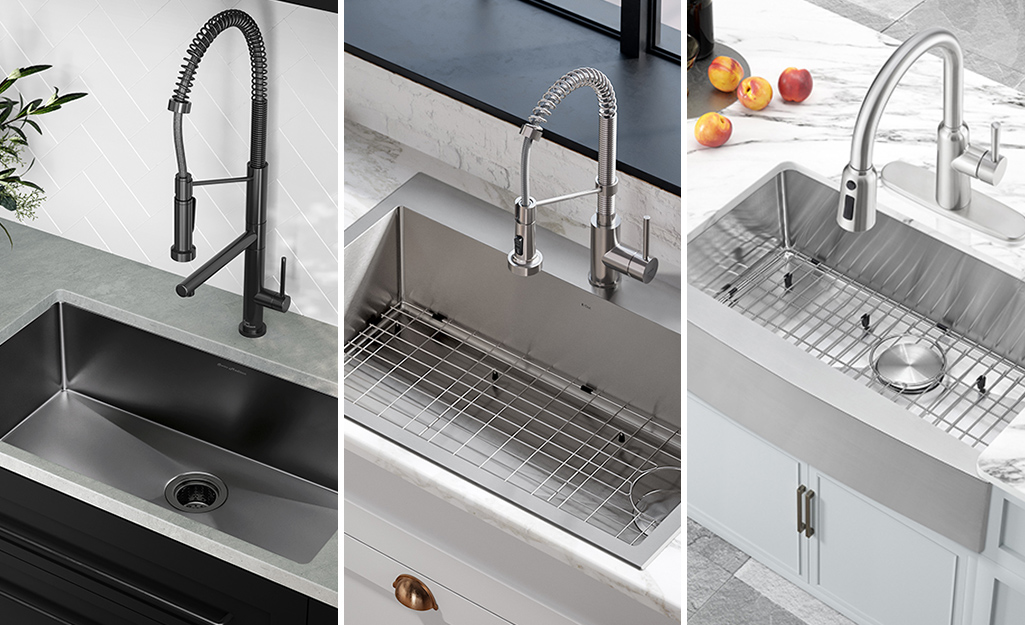




























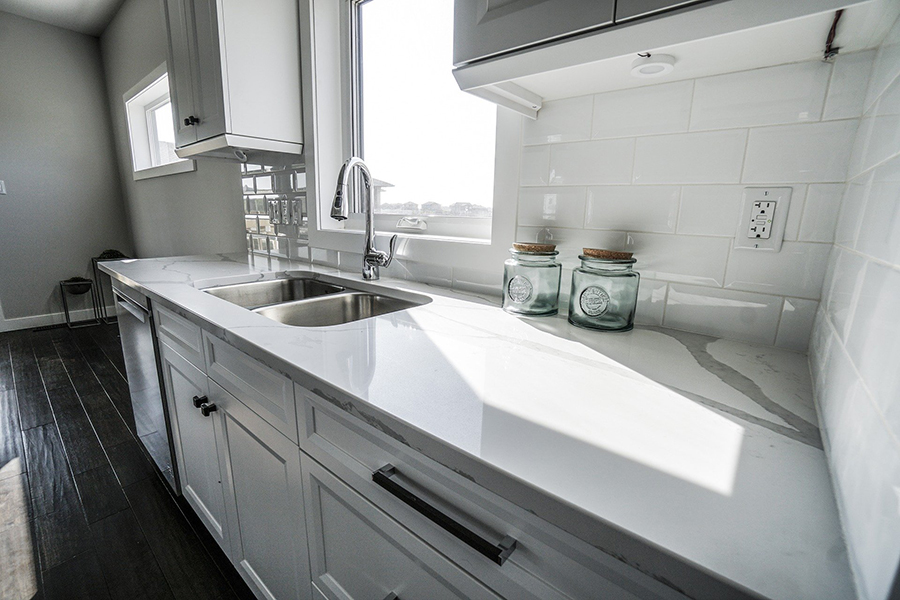



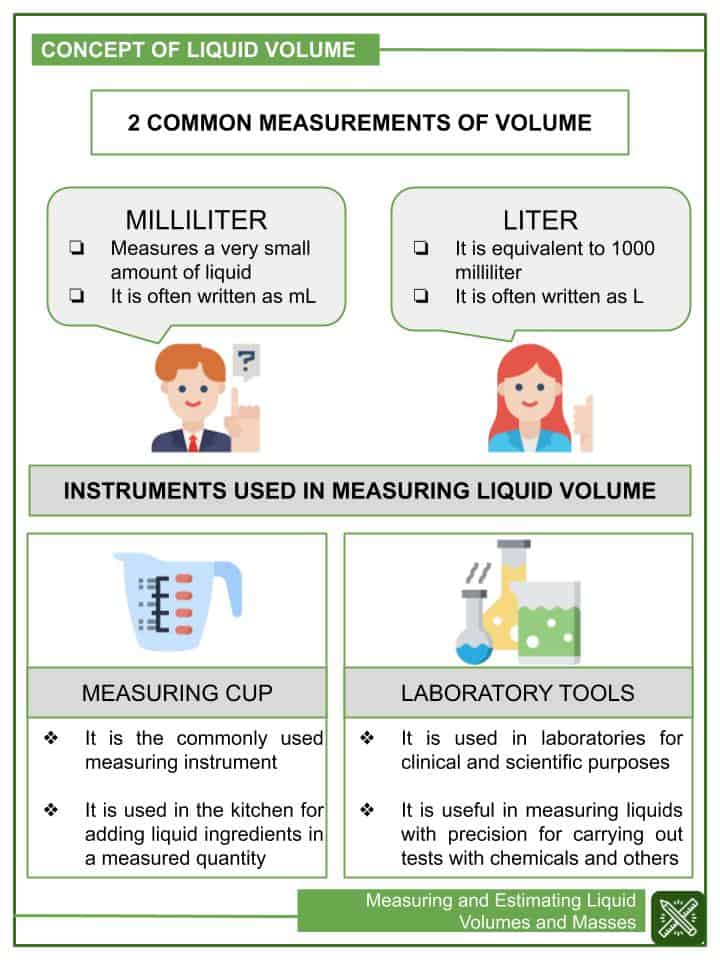





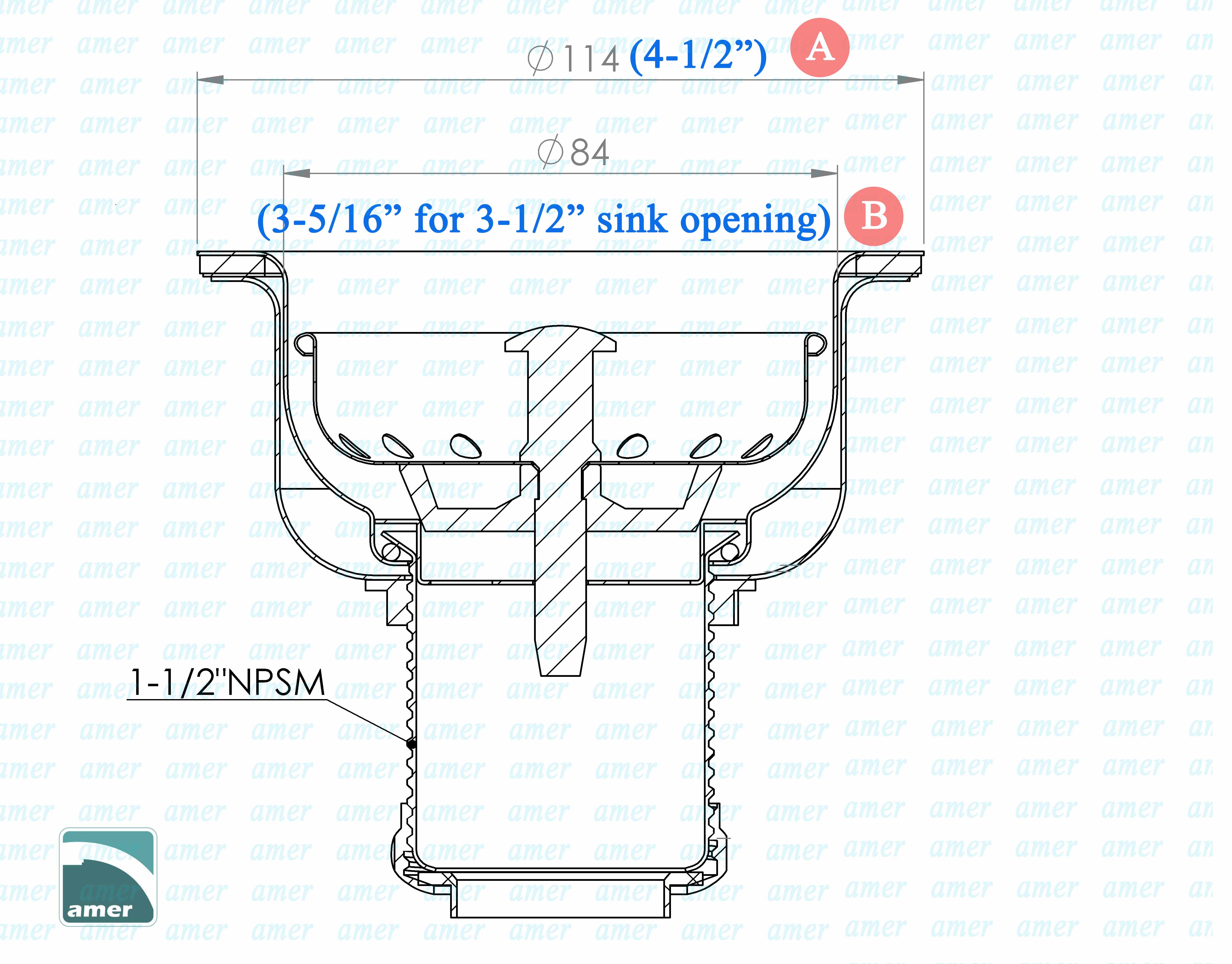
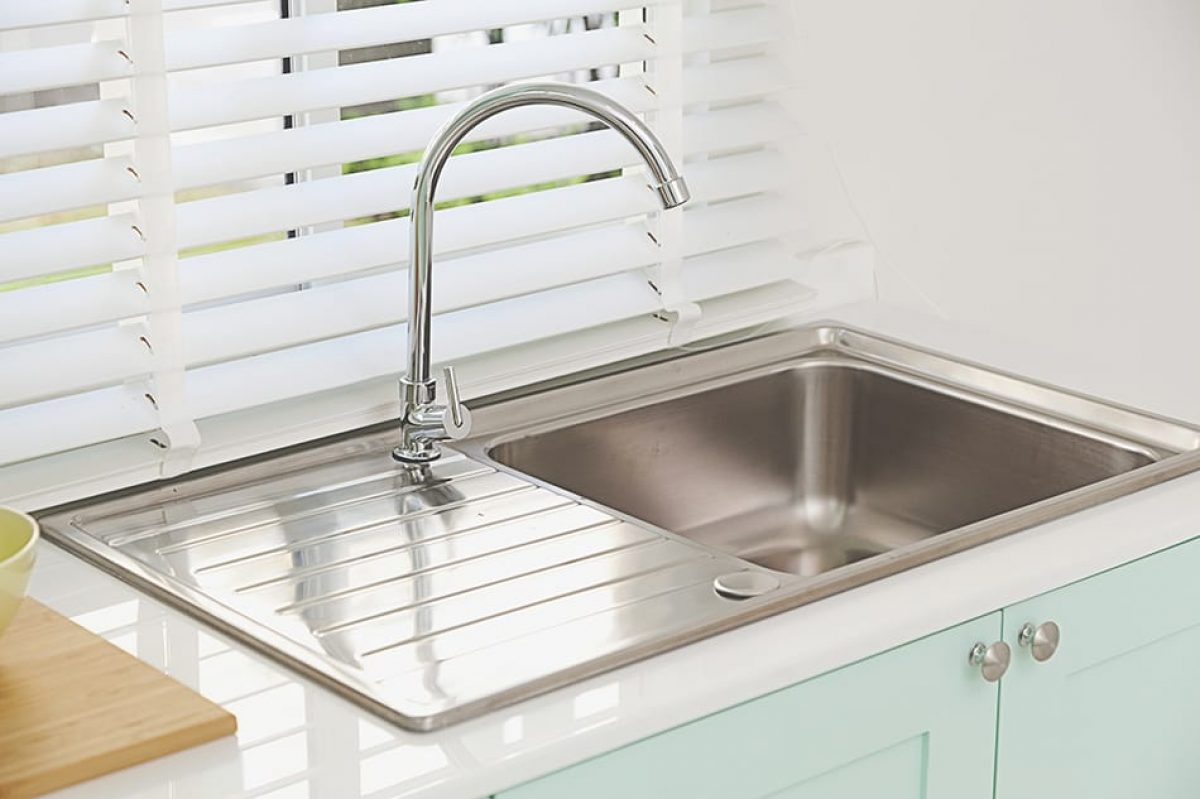













:max_bytes(150000):strip_icc()/Basic-kitchen-sink-types-1821207_color_rev-0b539306b9ef4236a136624ad2a89a4c.jpg)
